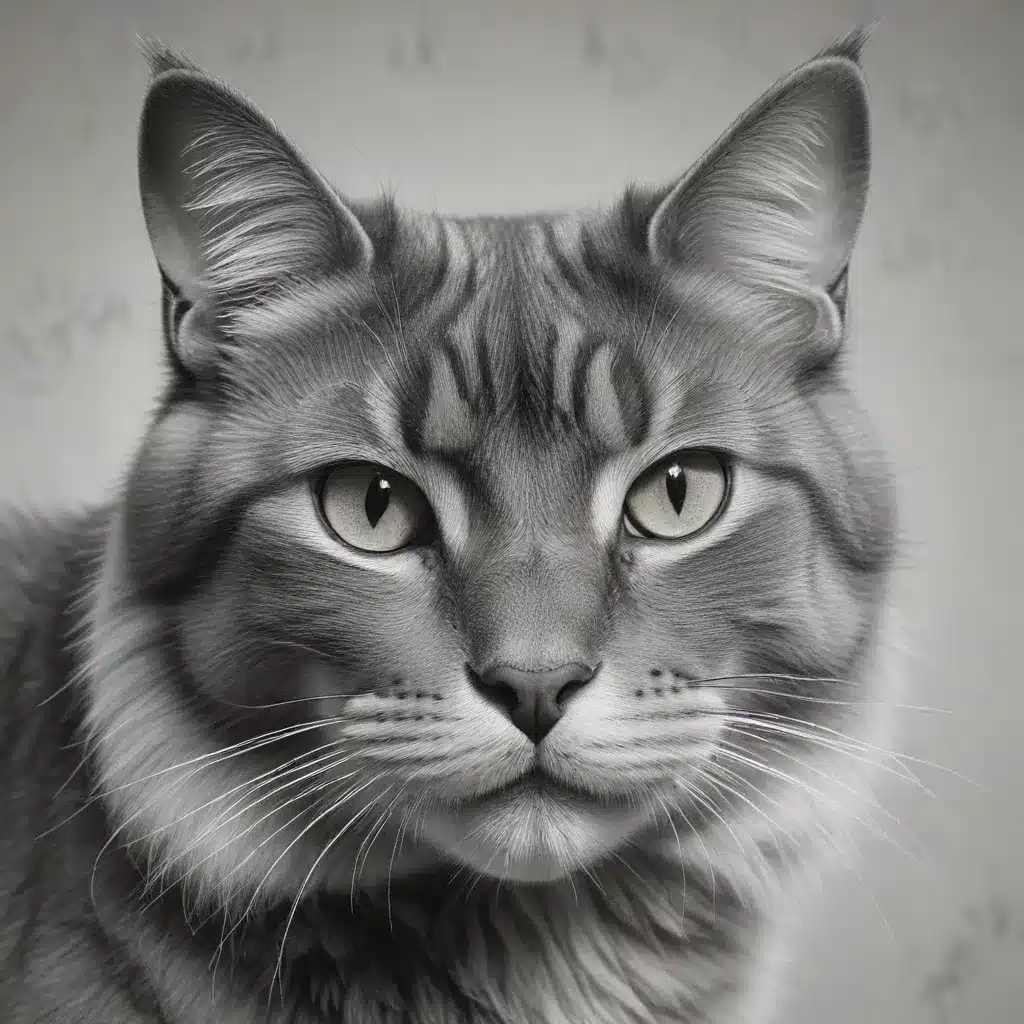
Graphite Greatness: Mastering the Art of Drawing Cats with Depth and Dimension
Cats have long captivated artists, their regal bearing, expressive faces, and dynamic movements providing an endless wellspring of inspiration. When it comes to rendering feline subjects in graphite, the challenge lies in capturing not just the physical likeness, but also the very essence of these enigmatic creatures. Fear not, aspiring pet portrait artists – with the right techniques and a keen eye for detail, you too can achieve graphite greatness and breathe life into your cat drawings.
Feline Fundamentals
To truly master the art of drawing cats, we must first understand their underlying anatomy and structure. Cats are digitigrade animals, meaning they walk on their toes, with their hind legs bent at a sharper angle compared to humans. This unique skeletal framework gives rise to the distinctive feline silhouette, with a broad chest, tapered waist, and powerful hindquarters. Pay close attention to the placement and proportions of the head, neck, torso, and limbs, ensuring your sketches accurately reflect the cat’s natural form.
Mastering proportions and perspective is also crucial when rendering cats in two dimensions. Cats come in a variety of shapes and sizes, from the lithe, elegant Siamese to the stocky, muscular Maine Coon. Carefully observe the relative size and positioning of features like the eyes, ears, muzzle, and paws, adjusting your drawings accordingly. Additionally, consider the cat’s orientation – is it facing you head-on, in profile, or at an angle? Applying the principles of foreshortening and spatial relationships will help you create the illusion of depth and volume on the page.
Graphite Techniques
Now that you’ve laid the groundwork with feline fundamentals, it’s time to explore the graphite techniques that will bring your cat drawings to life. Shading and texturing are essential skills, allowing you to capture the subtle variations in fur, whiskers, and other details. Experiment with a range of hatching, cross-hatching, and stippling techniques to suggest the soft, downy texture of a kitten’s coat or the sleek, glossy sheen of an adult cat’s fur.
Mastering the art of blending and layering is another key to achieving depth and dimension in your graphite cat portraits. Use your fingers, a tortillon (paper stump), or a blending stump to smoothly transition between values, creating seamless gradients that mimic the natural contours of the cat’s form. Don’t be afraid to layer multiple applications of graphite, building up tonal range and creating a sense of chiaroscuro (the interplay of light and shadow).
Finally, pay close attention to the placement and rendering of highlights and shadows. Cats’ fur patterns, facial features, and body positions can create intricate play of light and dark, which you’ll need to capture to achieve a realistic and visually striking drawing. Observe how the light hits your subject, and use your graphite application to accentuate the dimensional qualities of the cat’s form.
Capturing Cat Characteristics
Beyond the technical aspects of drawing, mastering the art of feline portraiture also requires an understanding of each cat’s unique expressive facial features and poise. Cats are known for their captivating eyes, which can convey a wide range of emotions – from the playful, wide-eyed curiosity of a kitten to the regal, narrowed gaze of a confident adult. Pay close attention to the placement, shape, and shading of the eyes, as well as the position of the ears, nose, and whiskers, to infuse your drawings with personality and character.
Equally important is the flowing fur and poise of your cat subjects. Cats are renowned for their graceful, fluid movements, whether they’re languidly stretching, pouncing on a toy, or curled up in a cozy nook. Use gestural lines and rhythmic shading to capture the sense of movement and energy in your drawings, and be mindful of the cat’s overall body language and attitude.
Experimenting with unique poses and attitudes can also add depth and interest to your cat portraits. Instead of defaulting to the classic “sitting” or “lying down” poses, consider more dynamic, unexpected compositions – a cat mid-leap, peering curiously over the edge of a surface, or even caught in a playful, mischievous moment. These types of compositions not only showcase your drawing skills but also reveal the multifaceted nature of your feline subjects.
Composition and Framing
As you hone your graphite cat-drawing skills, don’t forget the importance of composition and framing. A well-designed layout can elevate your artwork, drawing the viewer’s eye to the most captivating elements of your subject. When balancing the elements within your composition, consider the placement of the cat’s body, the inclusion of background details, and the overall visual flow of the piece.
Choosing the right viewpoint can also have a significant impact on your cat drawings. Experiment with different perspectives – a close-up, eye-level view, a bird’s-eye look down on a lounging cat, or even a low, ground-level angle. Each vantage point will offer unique opportunities to showcase your feline subject’s features and personality.
Finally, don’t neglect the importance of incorporating backgrounds into your cat portraits. While the cat should undoubtedly be the focal point, a thoughtfully rendered background can add depth, context, and visual interest to your drawings. Consider including subtle architectural elements, lush foliage, or even other pet companions to create a cohesive, immersive scene.
As you continue to hone your skills and explore the endless possibilities of graphite cat portraiture, remember to draw inspiration from the world around you. Observe the cats in your own life, study the work of master graphite artists, and experiment with new techniques and compositions. With dedication, practice, and a keen eye for feline nuance, you too can achieve graphite greatness and create captivating cat drawings that truly capture the essence of these remarkable creatures.